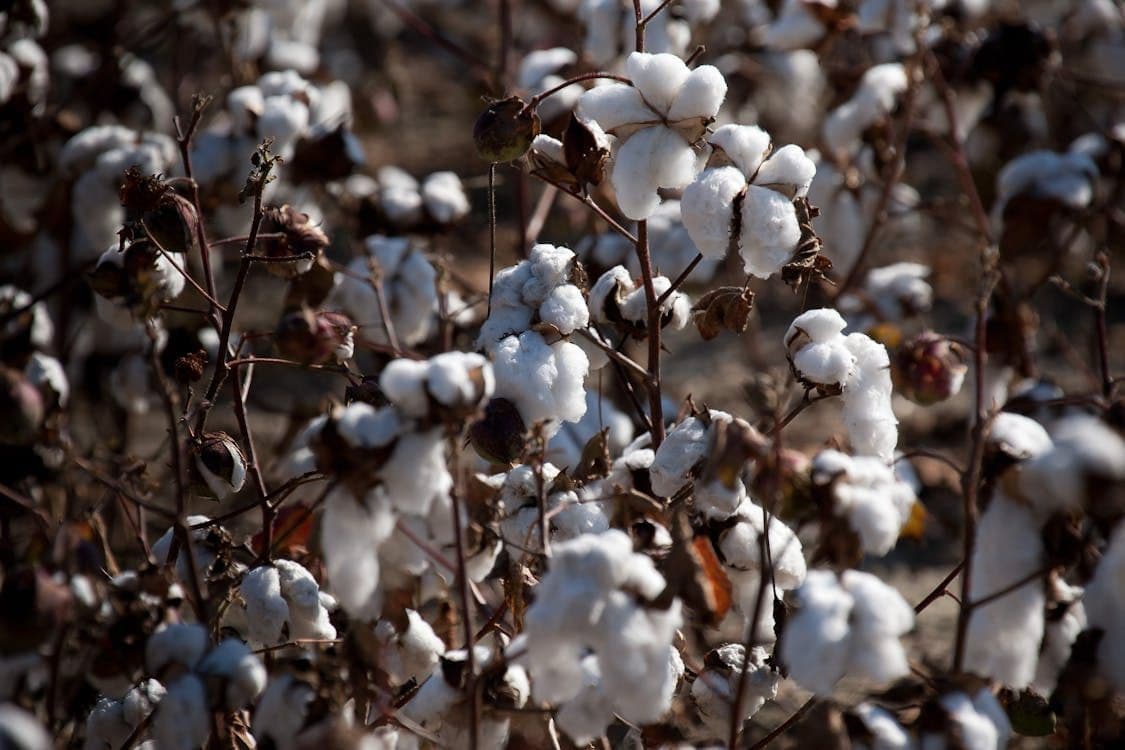The High Cost of Avoidable Errors in Cotton Production
You've likely had those seasons where everything seemed lined up—good weather, timely planting, solid inputs—yet the yields fell short, leaving you scratching your head over what went wrong. Common mistakes in cotton farming can sneak up on even the most experienced growers, from subtle oversights in soil prep to misjudged pest thresholds that snowball into major losses. Recognizing and sidestepping these pitfalls isn't about perfection; it's about tightening your operation to protect profits in an industry where margins are razor-thin.
Extension data from major cotton belts shows that avoidable errors like improper depth or delayed scouting can slash yields by 10-25%, per agronomic studies, turning potential top-end harvests into average or worse. Factors like variety mismatch, nutrient imbalances, and irrigation missteps all contribute, but with proactive strategies, you can mitigate risks and boost consistency. For seasoned operators, this means reflecting on past hiccups and integrating lessons into your rotation, fertility, and IPM plans, drawing on field trials and data to turn potential setbacks into strengths.
If you're optimizing for yield, pair this with our Optimizing Cotton Growth Regulators for Yield Enhancement for complementary performance boosts.
Misjudging Soil Preparation and How to Get It Right
Soil is your foundation, and skimping here sets a shaky start—common mistakes in cotton farming often stem from inadequate testing or tillage, leading to compaction that chokes roots and drops stands by 15-20% per soil science reports.
- Skipping Comprehensive Tests: Relying on old data misses pH shifts or nutrient depletions; annual grid sampling identifies zones needing lime or gypsum, maintaining 6.0-6.8 for optimal uptake—trials show this lifts emergence 10%.
- Over-Tilling in Wet Conditions: Plowing soggy fields smears structure; wait for friable moisture to avoid clods, preserving aggregates for better infiltration—data indicates over-tilled clays lose 25% water-holding capacity.
- Ignoring Organic Matter: Low levels <2% accelerate erosion; incorporate residues or covers to build 3-4%, enhancing microbial activity for 10-15% better nutrient cycling.
Use apps for moisture checks; challenges in variable soils are met by zoned tillage. Annual audits refine prep.
For tillage innovations, see our Innovative Cotton Tillage Practices for Soil Conservation.
Planting Errors That Sabotage Stands
Timing and depth are non-negotiable—common mistakes in cotton farming, like rushing into cold soils or burying seeds too deep, can thin stands by 20-30%, per planting studies, crippling yield potential from the get-go.
- Ignoring Soil Temperature: Planting below 60°F slows germination; monitor with probes for 65°F at 4 inches for three days—data shows this boosts uniform emergence 15-20%.
- Inconsistent Depth: Varying 0.5-1 inch risks poor contact; calibrate planters for even furrows, aiming 0.5-0.75 inch in loams—trials indicate deviations drop populations 10%.
- Overlooking Seed Quality: Low-vigor lots fail in stress; test germination >85% and treat for fungi—extension reports treated seeds improve stands 12% in damp conditions.
Calibrate for 30,000-40,000 plants/acre; challenges in wet springs are met by delayed starts. Test strips validate.
Link to our Cotton Precision Planting Techniques for advanced methods.
Nutrient Imbalances Leading to Weak Growth
Fertility missteps burn budgets—common mistakes in cotton farming like blanket applications ignore variability, causing deficiencies that stunt squaring and drop boll set by 15-25% per nutrient trials.
- Skipping Tissue Sampling: Soil tests alone miss in-season needs; sample at bloom for N/K ratios >2:1—data shows corrections lift yields 10%.
- Excess Nitrogen Early: Promotes rank vegetation; split 30-40% pre-plant, 60-70% side-dress—studies indicate this reduces lodging 20%, preserving fiber quality.
- Ignoring Micronutrients: Boron shortfalls hollow bolls; foliar 0.5 lb/acre at square prevents 10-15% loss—extension recommends for sandy soils.
Use VRT for precision; challenges in leaching rains are met by slow-release forms. Annual plans adjust.
For detailed plans, see our Nutrient Management Strategies for Cotton Farming: Maximizing Yield and Sustainability.
Pest Management Oversights That Escalate Damage
Underestimating threats costs dearly—common mistakes in cotton farming, like delayed scouting or over-reliance on one mode, let infestations explode, slashing yields 20-40% per IPM reports.
- Ignoring Thresholds: Treating below economic levels wastes $20-30/acre; monitor weekly for aphids >50/leaf—data shows threshold-based sprays save 25% chemicals.
- Skipping Rotation: Continuous cotton builds nematodes; break with corn/soy for 30% population drop—trials confirm resistance delays.
- Poor Application Timing: Spraying in wind drifts product; calm mornings <5 mph ensure coverage, cutting re-apps 15%.
Rotate modes; challenges in resistance are met by beneficials. Scouting apps track.
See our Advanced Cotton Pest Scouting Techniques for Early Detection for refined methods.
Irrigation Blunders Causing Stress or Excess
Water mismanagement swings yields—common mistakes in cotton farming like uniform watering ignore variability, leading to drought stress or root rot that cuts output 15-30% per irrigation studies.
- Overlooking Soil Probes: Guessing needs wastes water; place at 6-24 inches for depletion alerts—data shows sensor-guided saves 20-25%.
- Ignoring ET Models: Daily evapotranspiration calculations guide amounts; 1-1.5 inches weekly during bloom sustains fill—trials indicate this boosts bolls 10%.
- Poor System Maintenance: Clogged emitters, uneven fields; annual flushes prevent 15% loss in drip efficiency.
Use apps for scheduling; challenges in saline water are met by leaching cycles. Monitor groundwater.
For advanced systems, explore our Efficient Irrigation Strategies for Cotton Farming: Optimizing Water Use and Yield.
Harvest Timing Errors Affecting Quality
Misjudged picks degrade lint—common mistakes in cotton farming like early defoliation or wet delays, stain fiber, dropping grades 5-10 cents/lb per ginning data.
- Rushing Defoliation: Below 60% open risks green leaf; wait for NACB 4-5—studies show proper timing lifts turnout 3-5%.
- Ignoring Moisture: Picking above 12% mold modules; test for 10-12%—extension recommends for premium avoidance.
- Skipping Aids: Uneven canopies need ethephon; boosts open bolls 15%, improving uniformity.
Forecast tools aid; challenges in rain are met by desiccants. Test strips validate.
Link to our Harvest Management Strategies for Cotton Farming: Maximizing Yield and Quality.
Post-Harvest Storage Oversights Leading to Losses
Neglect after pick costs—common mistakes in cotton farming like poor module covering, let moisture degrade lint, losing 5-10% value per storage studies.
- Inadequate Tarps: Loose covers invite rain; secure with ties for an airtight seal—data shows proper covering cuts mold 25%.
- Ignoring Ventilation: Stacked modules overheat; space 2-3 feet for air flow, preventing hot spots.
- Skipping Monitoring: No probes miss humidity spikes; wireless sensors alert for >65% RH, averting spoilage.
Budget for quality tarps; challenges in wind are met by weighted edges. Annual inspections prevent.
For supply, see our Navigating Supply Chain Challenges in Cotton Farming.
Financial Mismanagement in Operations
Cash flow slips undermine—common mistakes in cotton farming, like ignoring budgets lead to over-spending, eroding profits 10-20% per econ analyses.
- Skipping Cost Tracking: No logs miss input spikes; apps like Granular categorize, highlighting 15% savings opportunities.
- Overlooking Insurance: Inadequate coverage risks losses; tailor for hail/flood, recovering 80% in claims.
- Ignoring Markets: Fixed pricing locks lows; hedge with futures for 5-10 cent gains.
Use tools for forecasts; challenges in volatility are met by diversification. Annual reviews refine.
See our Cotton Farming Profit Analyzer for tools.
Labor and Team Management Pitfalls
People problems stall progress—common mistakes in cotton farming, like poor training raise errors 15-25% per labor studies.
- Inadequate Onboarding: Rushed hires fumble tasks; structured programs cut mistakes 20%.
- Skipping Incentives: No bonuses drop morale; performance pay lifts output 10-15%.
- Ignoring Safety: Lax protocols raise injuries; OSHA training reduces incidents 30%.
Co-ops aid; challenges in shortages are met by automation. Annual surveys improve.
For labor, check our Cotton Farm Labor Management Best Practices for Efficiency.
Technology Adoption Hesitations
Resisting tech limits gains—common mistakes in cotton farming like ignoring drones miss efficiencies, dropping yields 10-15% per precision ag data.
- Underusing GPS: Manual steering overlaps 5-10%; auto-steer saves inputs.
- Skipping Apps: No monitoring misses alerts; tools like FieldView boost decisions 20%.
- Ignoring Data: Unanalyzed yields repeat errors; analytics refine 15%.
Trial small; challenges in learning are met by extensions. Annual upgrades pay.
Regional Common Mistakes and Solutions
Tailor avoidance to your belt—common mistakes in cotton farming vary, but targeted fixes enhance outcomes.
- Southwest Arid: Over-irrigation salinates; probes cut use 20%.
- Southeast Humid: Delayed fungicides rot bolls; proactive sprays save 15%.
- Mid-South Variable: Poor rotations build nematodes; diverse cycles drop 25%.
Local data guides; adapt iteratively.
Case Studies: Learning from Real-World Errors
Stories teach—common mistakes in cotton farming turned around showcase recovery.
- Texas Drought Mismanagement: Grower over-planted in a dry year, losing 30%; switched to probes/varieties, gaining 200 lbs/acre next.
- Georgia Pest Oversight: Ignored thresholds, sprays soared $50/acre; IPM cut costs 25%, yields up 150 lbs.
- California Nutrient Skip: Imbalances fined micronaire; tissue tests boosted quality, premiums $40/acre.
Adapt lessons; scale to your operation.
Future Trends in Avoiding Farming Mistakes
Innovation prevents pitfalls—common mistakes in cotton farming decrease with AI and biotech.
- AI Diagnostics: Predict errors 7 days ahead; 30% accuracy gains.
- Gene-Edited Varieties: Built-in tolerance cuts oversights 20%.
- Blockchain Trace: Verify practices; premiums up 10%.
Monitor; adapt for edges.
Mistakes Impact Table
Here's a table summarizing common mistakes in cotton farming and their impacts based on general industry data:
| Mistake Category | Typical Impact | Avoidance Gain | Cost Savings ($/acre) |
|---|---|---|---|
| Soil Prep Errors | 15-20% yield loss | 10% emergence boost | 50-100 |
| Planting Mistakes | 20-30% stand thin | 15% uniform stands | 30-60 |
| Nutrient Imbalances | 15-25% boll drop | 10% yield lift | 40-80 |
| Pest Oversights | 20-40% damage | 25% spray reduction | 20-50 |
| Irrigation Blunders | 15-30% stress | 20% water saved | 60-120 |
| Harvest Timing Errors | 5-10 cents/lb grade drop | 3-5% turnout gain | 30-70 |
| Storage Oversights | 5-10% value loss | 25% mold reduction | 20-40 |
| Financial Mismanagement | 10-20% profit erosion | 15% budget optimization | 50-100 |
| Labor Pitfalls | 15-25% errors | 10-15% output rise | 40-80 |
| Tech Hesitations | 10-15% yield drop | 15% efficiency gain | 30-60 |
This table highlights risks and benefits; adjust for your operation with local data.
Measuring Avoidance Success
Track improvements—common mistakes in cotton farming reduced the show in metrics.
- Yield Stability: Compare variances; 10% reduction indicates progress.
- Cost Ratios: Lower inputs per bale; aim for 15% savings.
- Quality Indexes: Fewer discounts; higher premiums signal wins.
Annual audits; software aggregates. Challenges in measurement met with logs.
For profit, explore our Cotton Farming Profit Analyzer.
Actionable Takeaways to Sidestep Pitfalls
Avoid common mistakes in cotton farming with these steps:
- Prep Soil Thoroughly: Test/amend; till at the right moisture.
- Plant Precisely: Check temp/depth; quality seed.
- Balance Nutrients: Tissue sample; split apps.
- Manage Pests Proactively: Threshold scout; rotate modes.
- Irrigate Smartly: Use probes/models; maintain systems.
- Time Harvest: Monitor maturity/moisture; use aids.
- Store Properly: Secure covers; monitor humidity.
- Track Finances: Budget/logs; ensure adequate.
- Train Labor: Onboard/incentivize; prioritize safety.
- Adopt Tech: Trial tools; integrate data.
Common mistakes in cotton farming, when addressed, elevate operations. For labor, visit our Cotton Farm Labor Management Best Practices for Efficiency.
Common mistakes in cotton farming turn into lessons for thriving farms.


